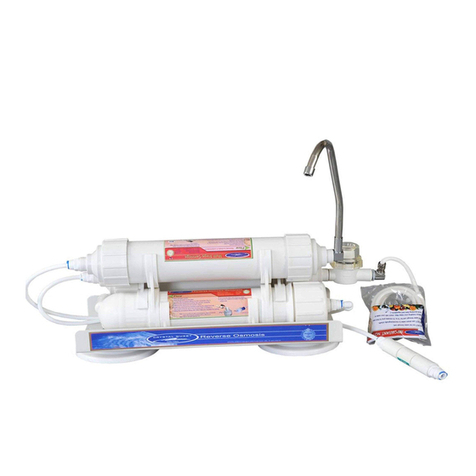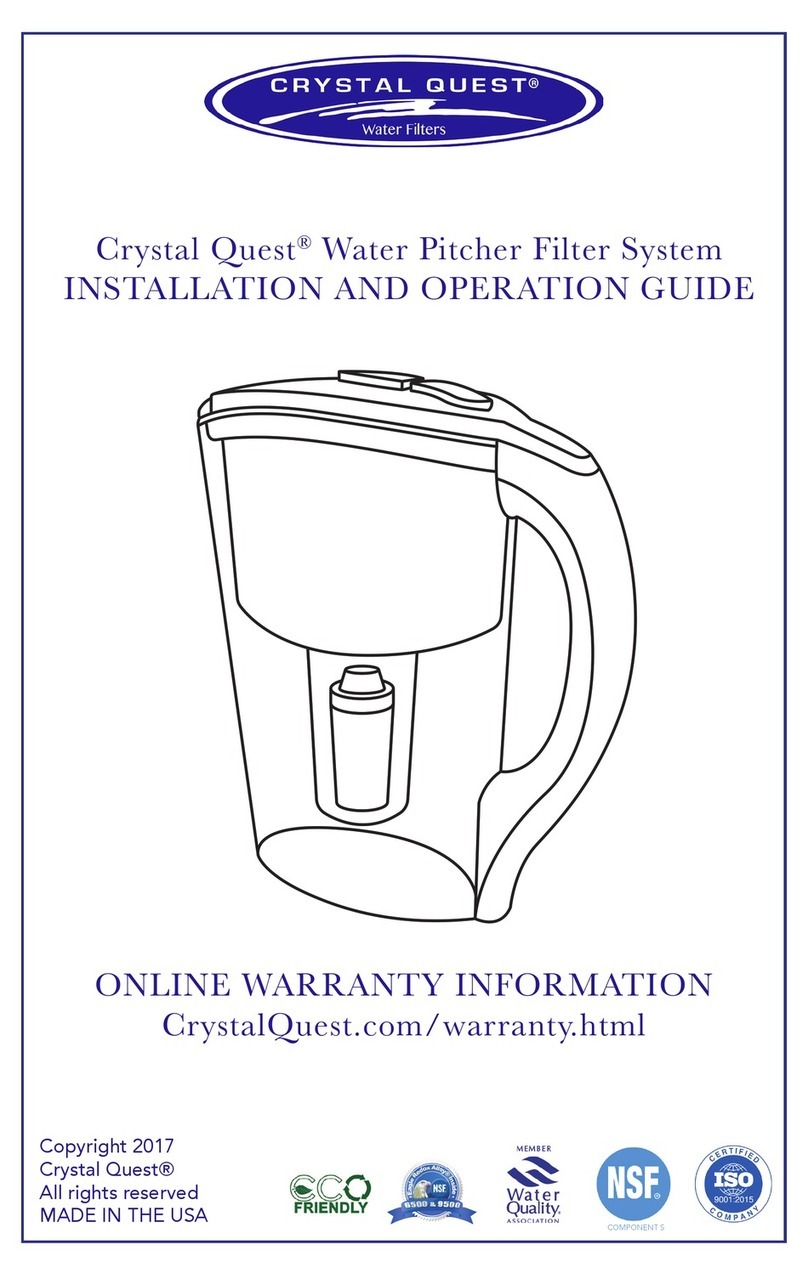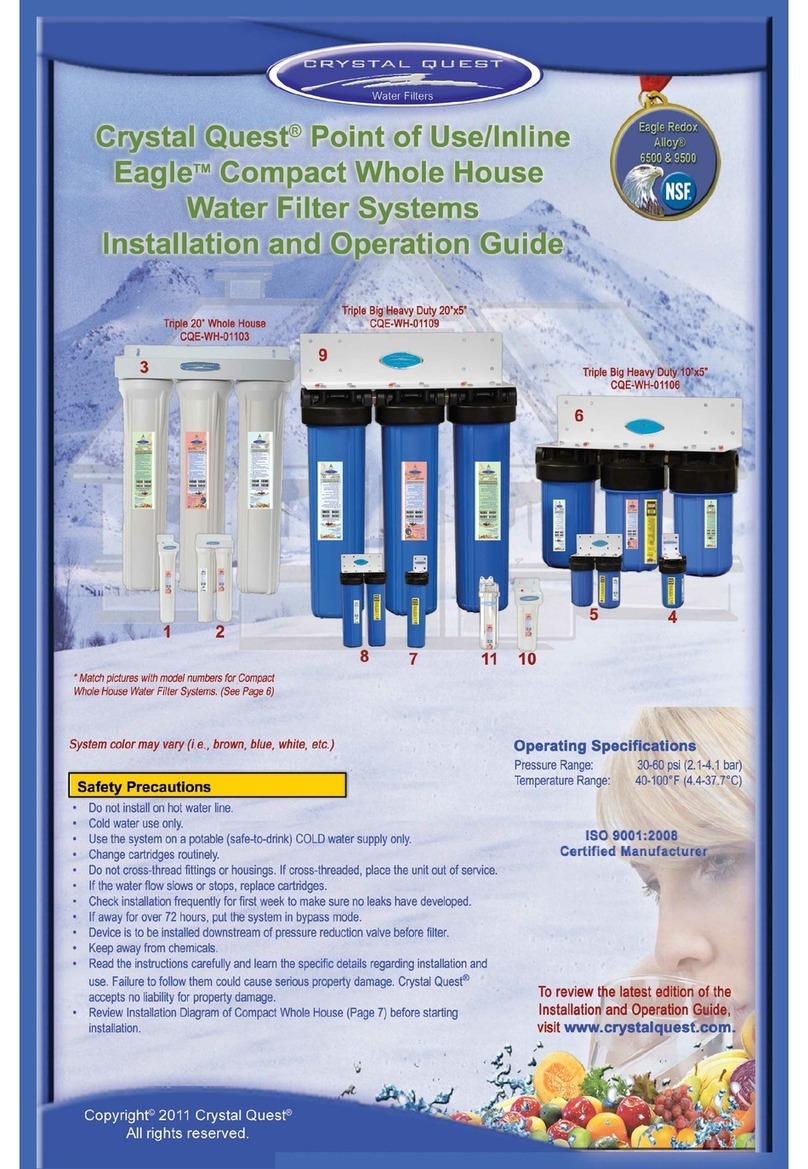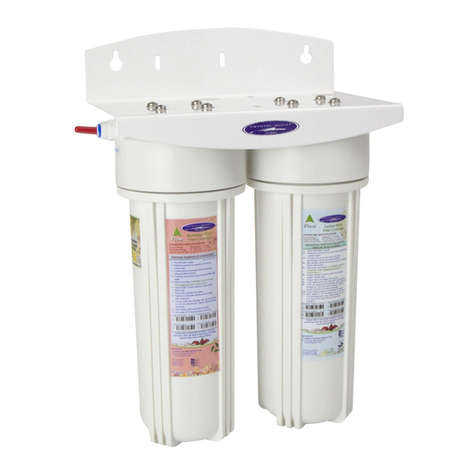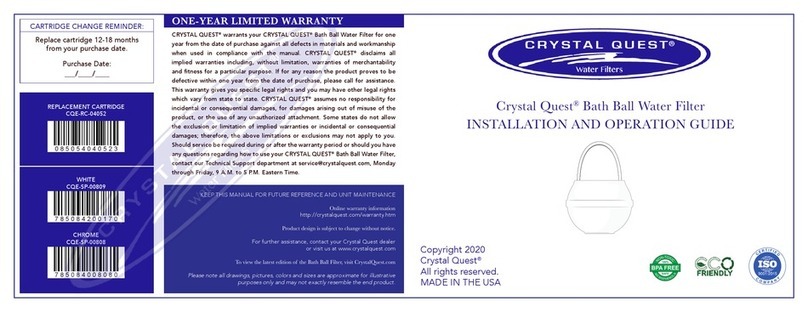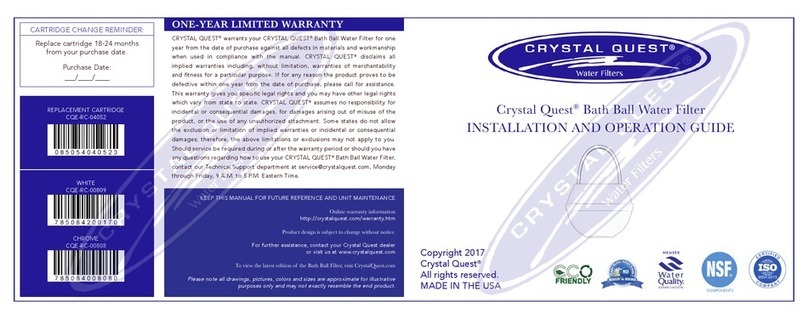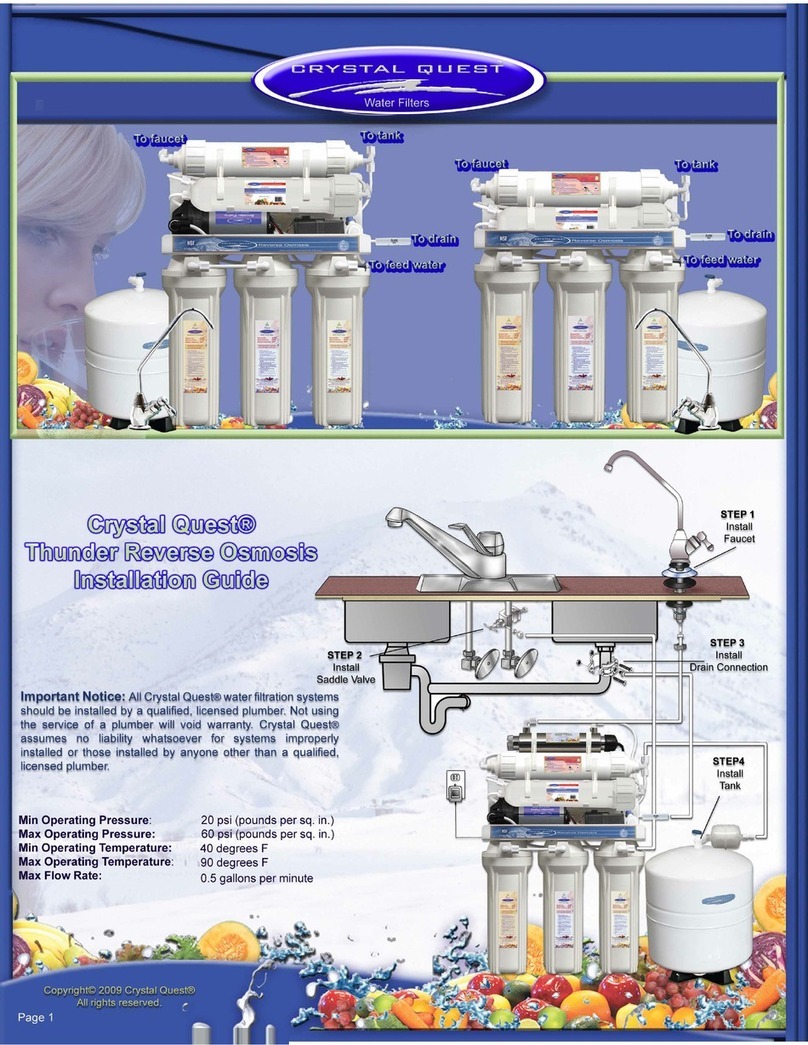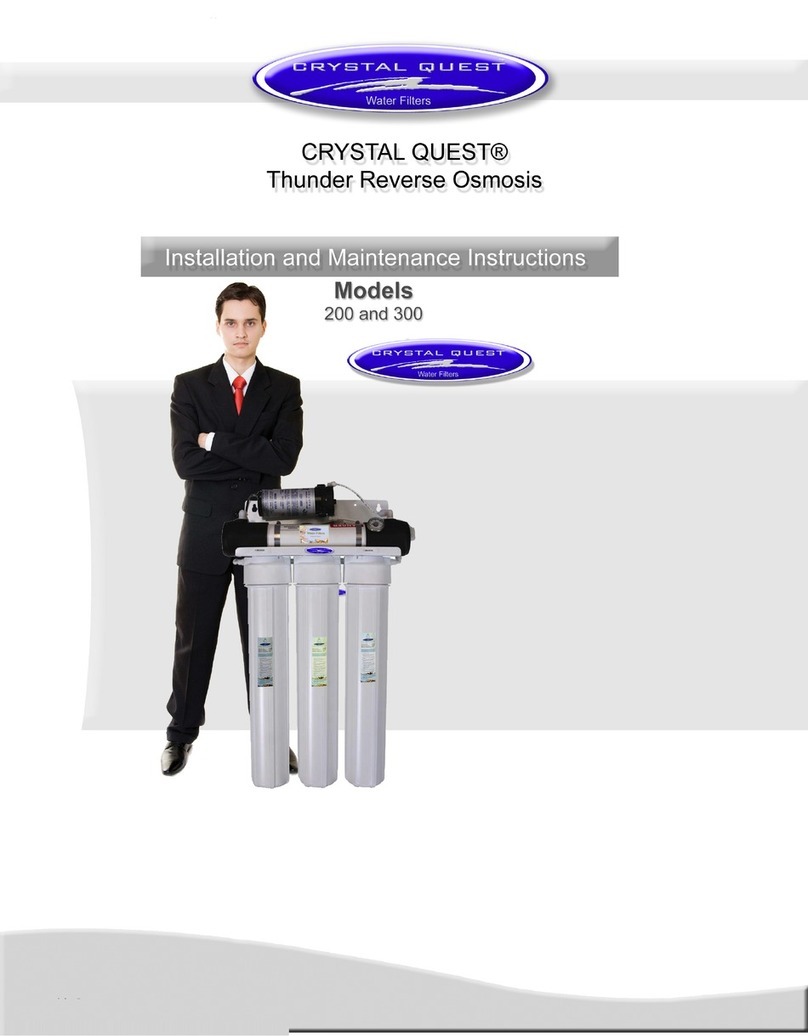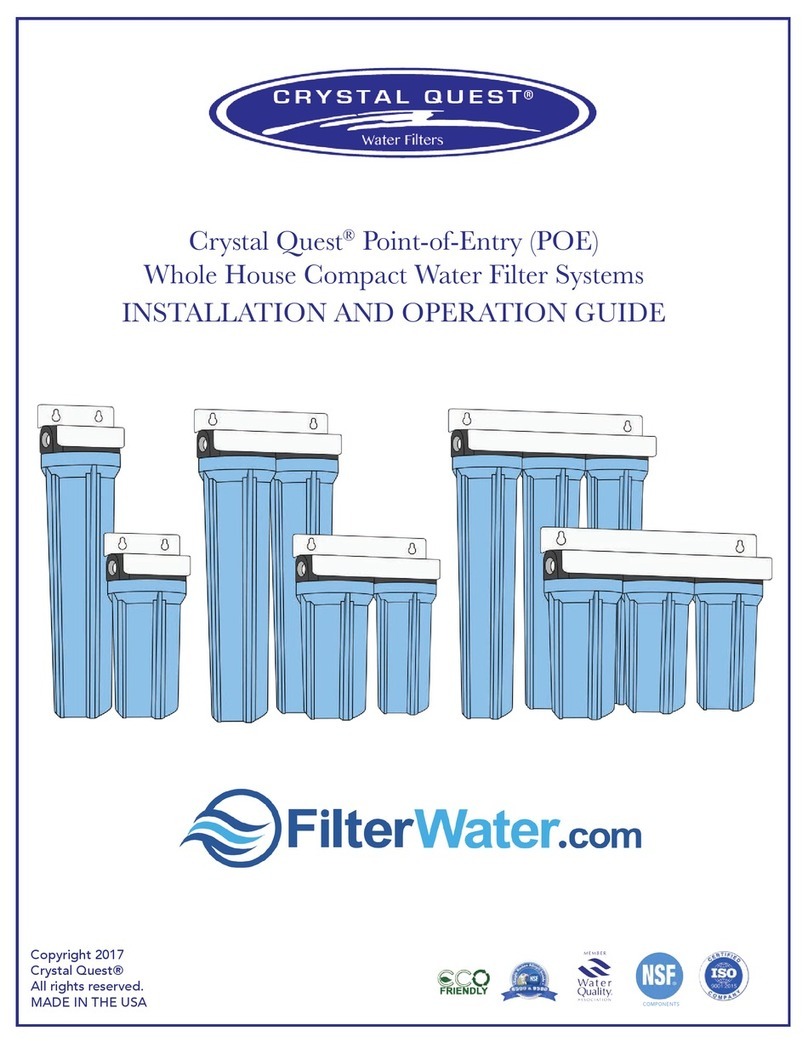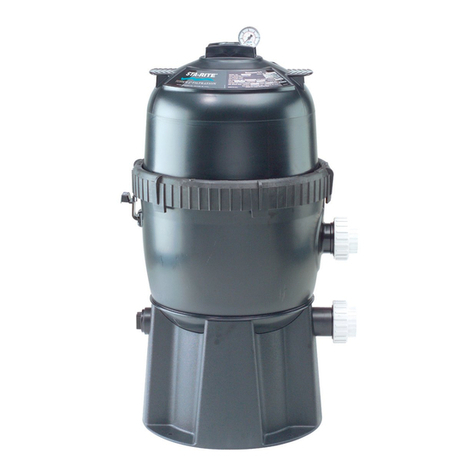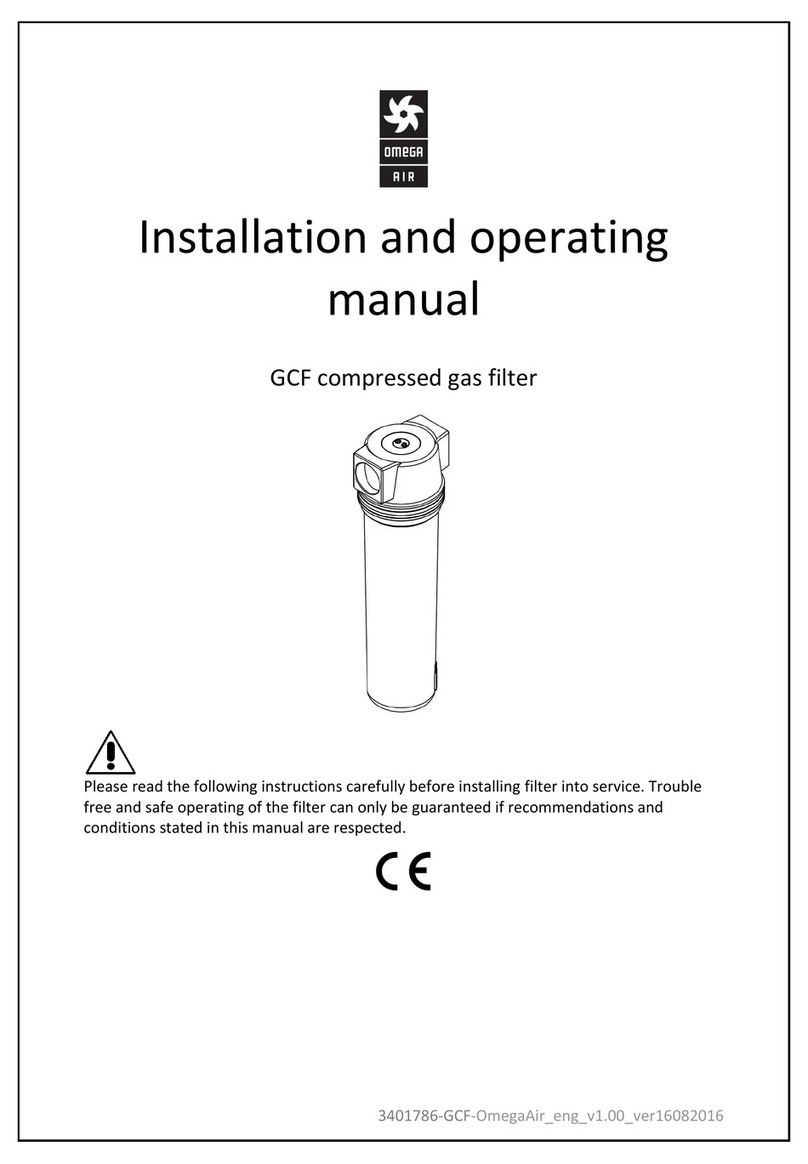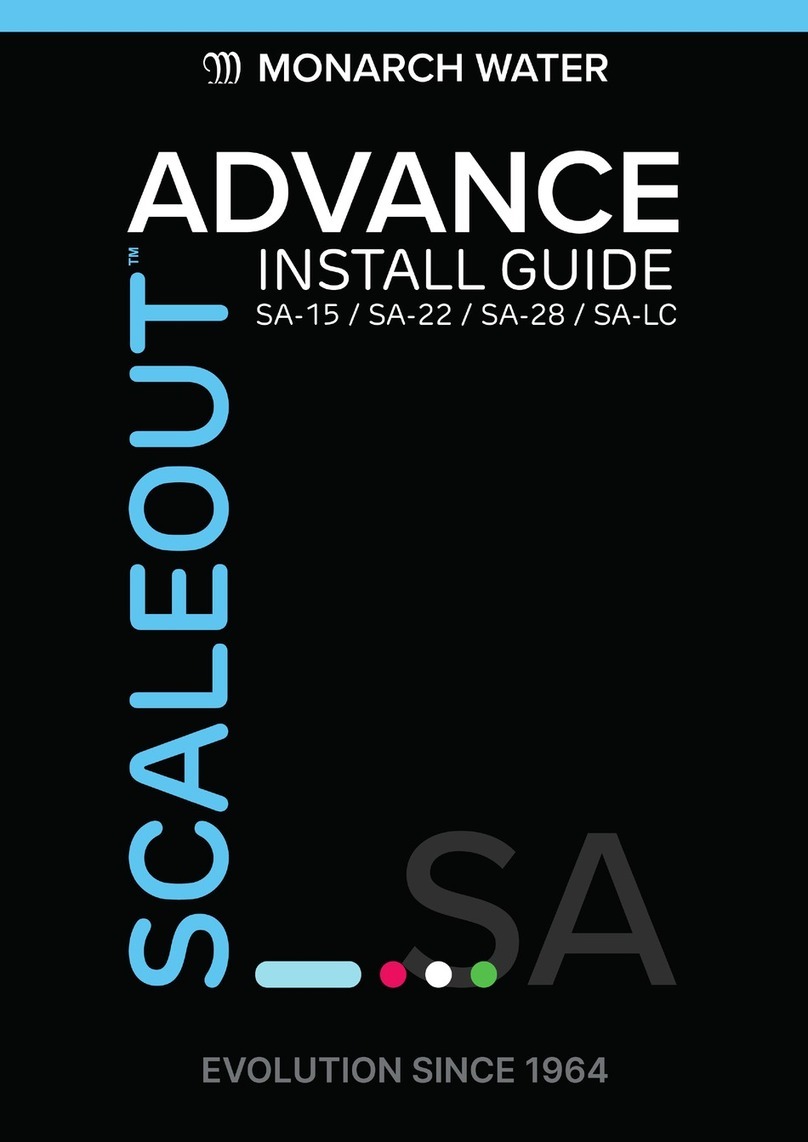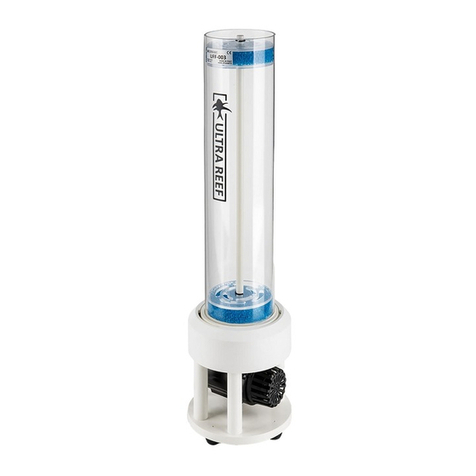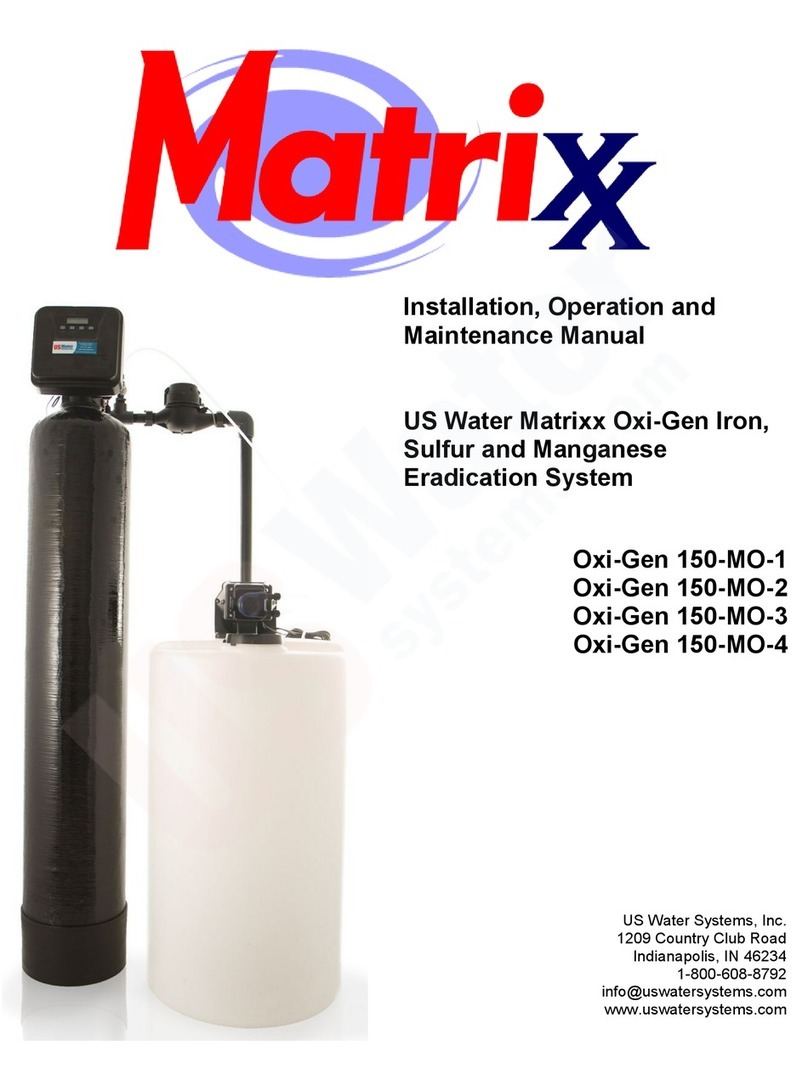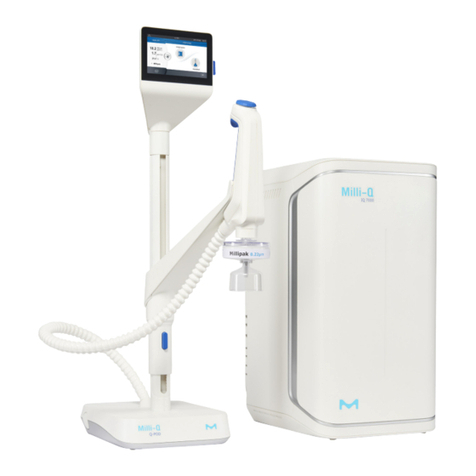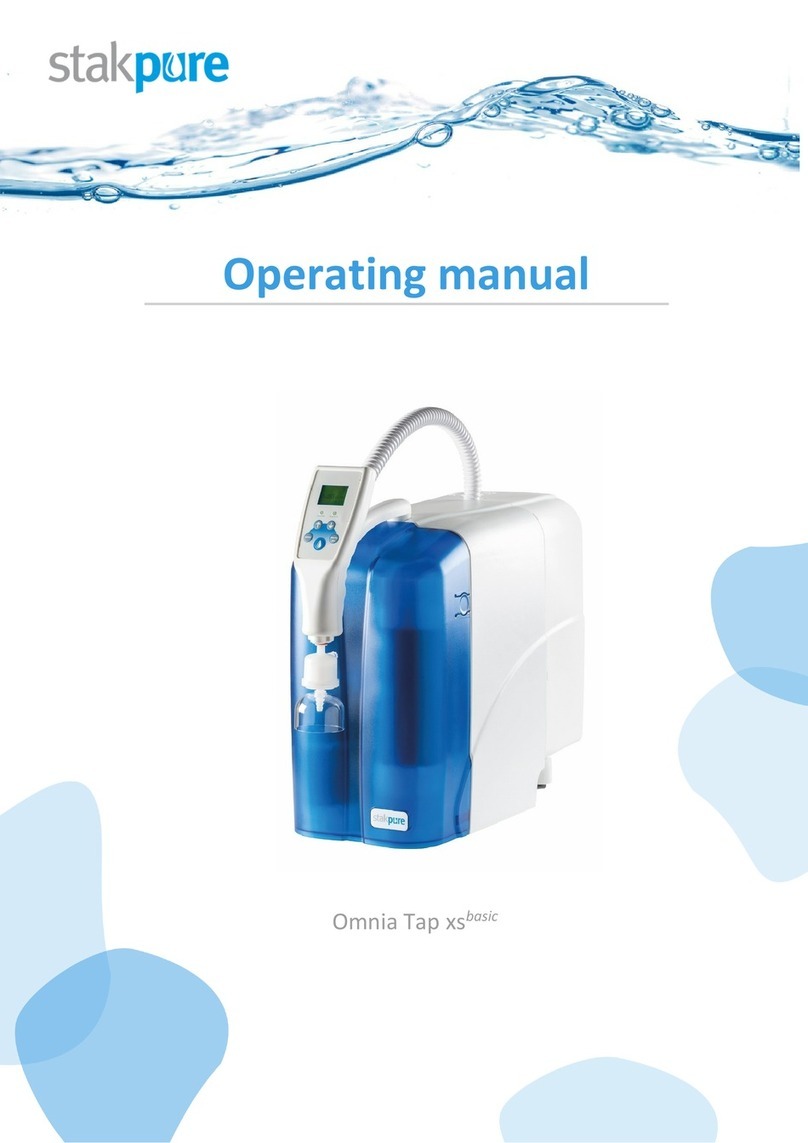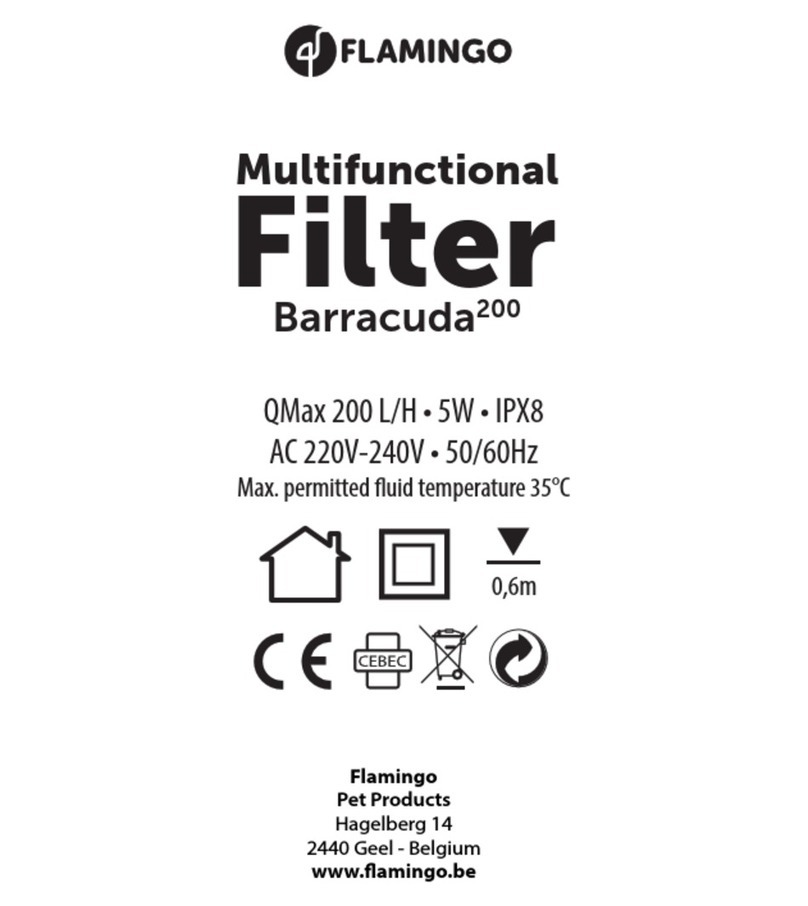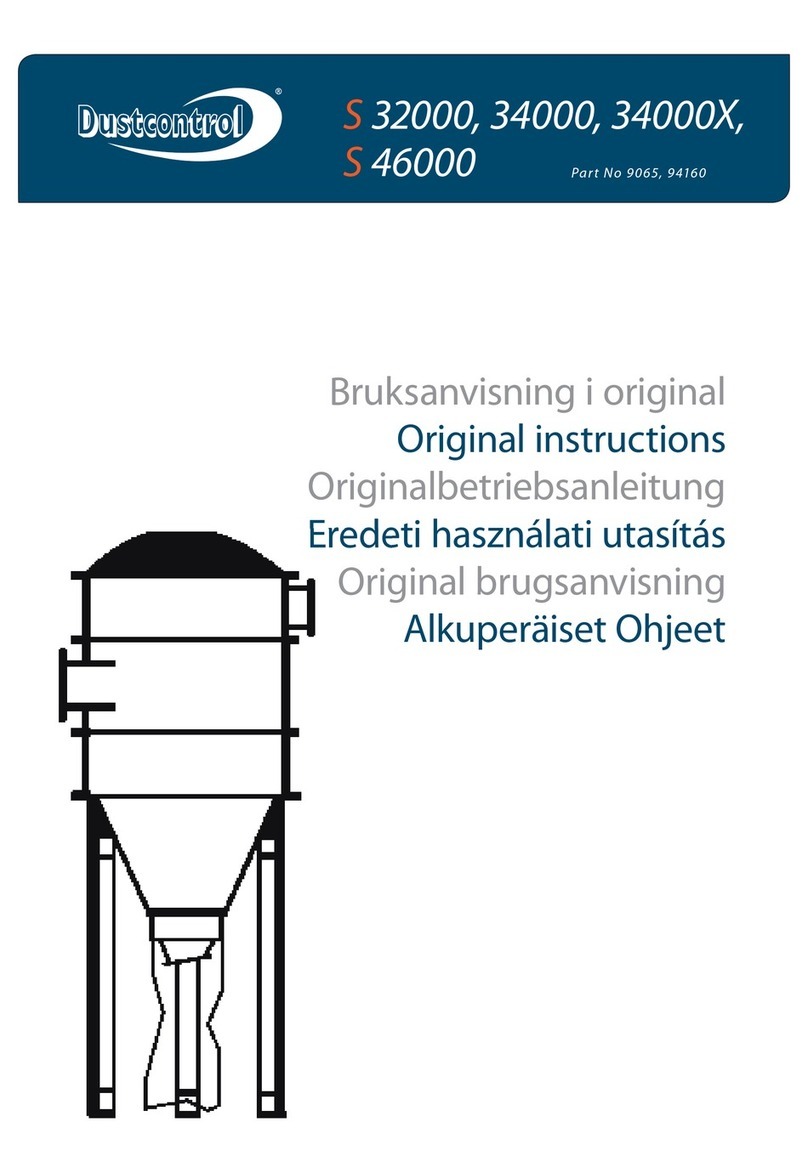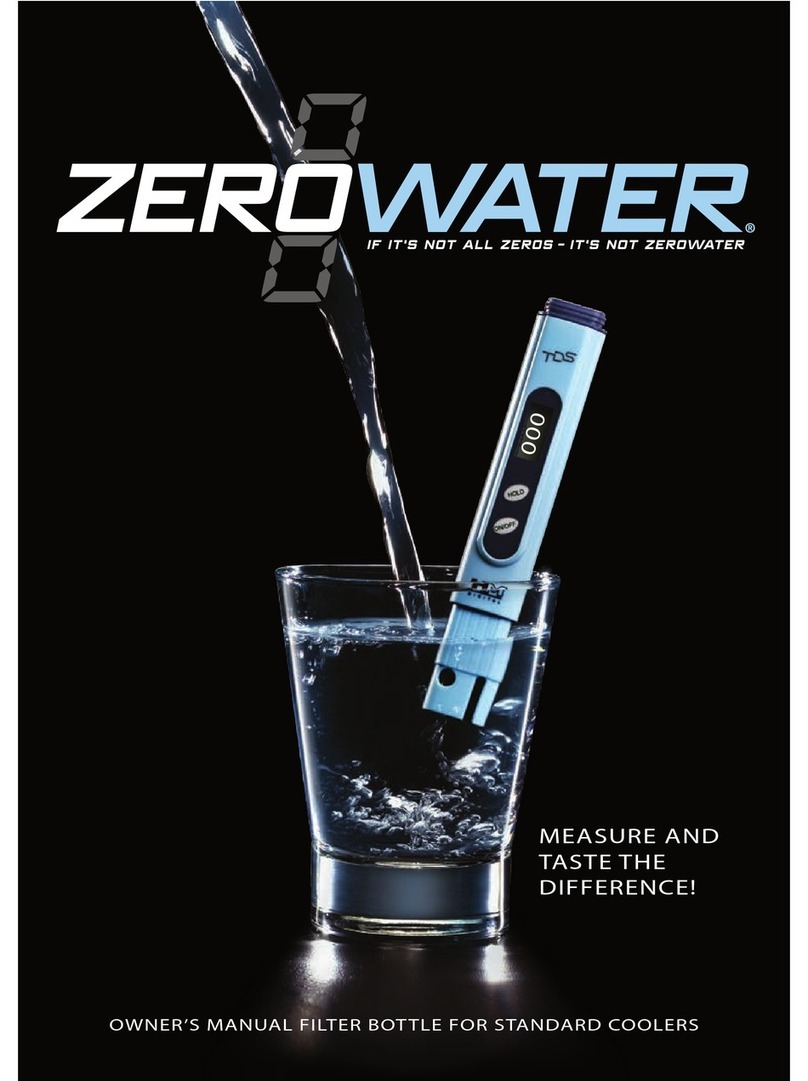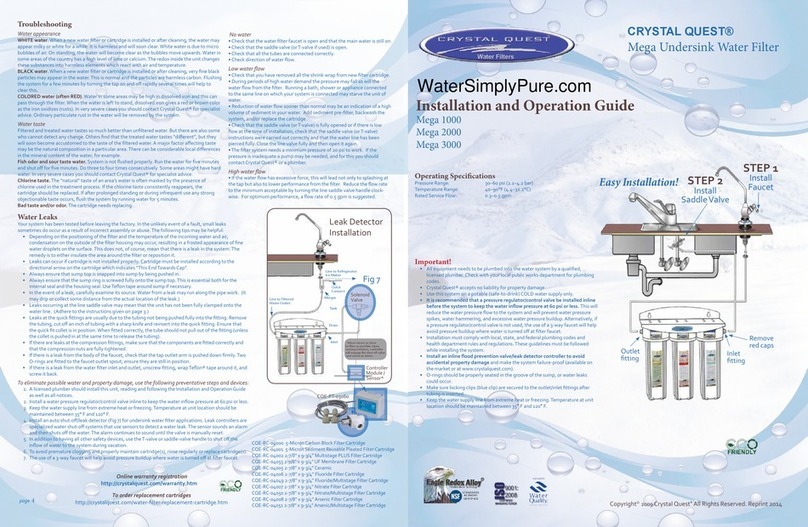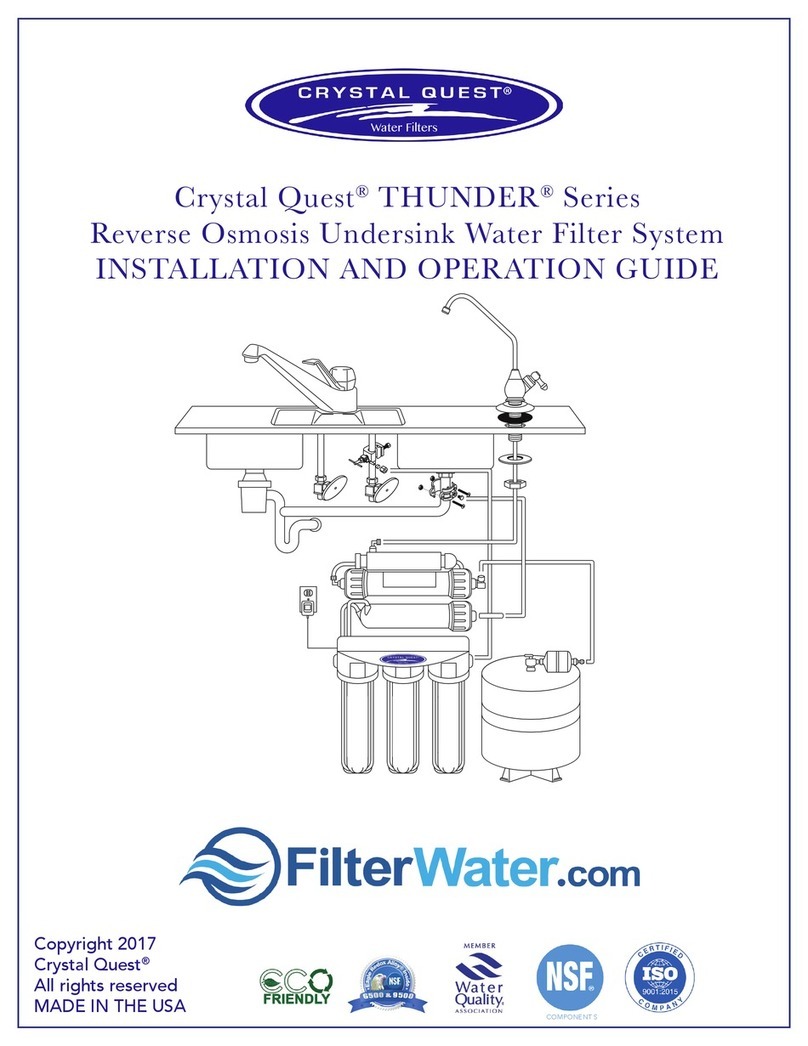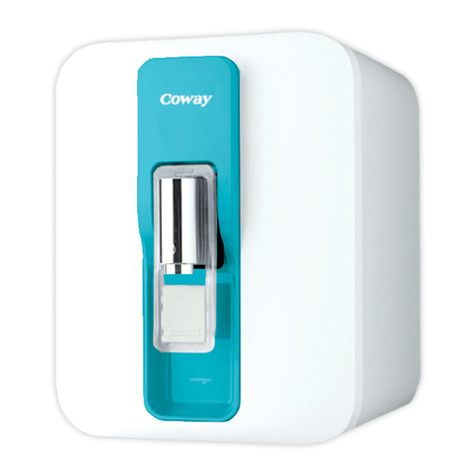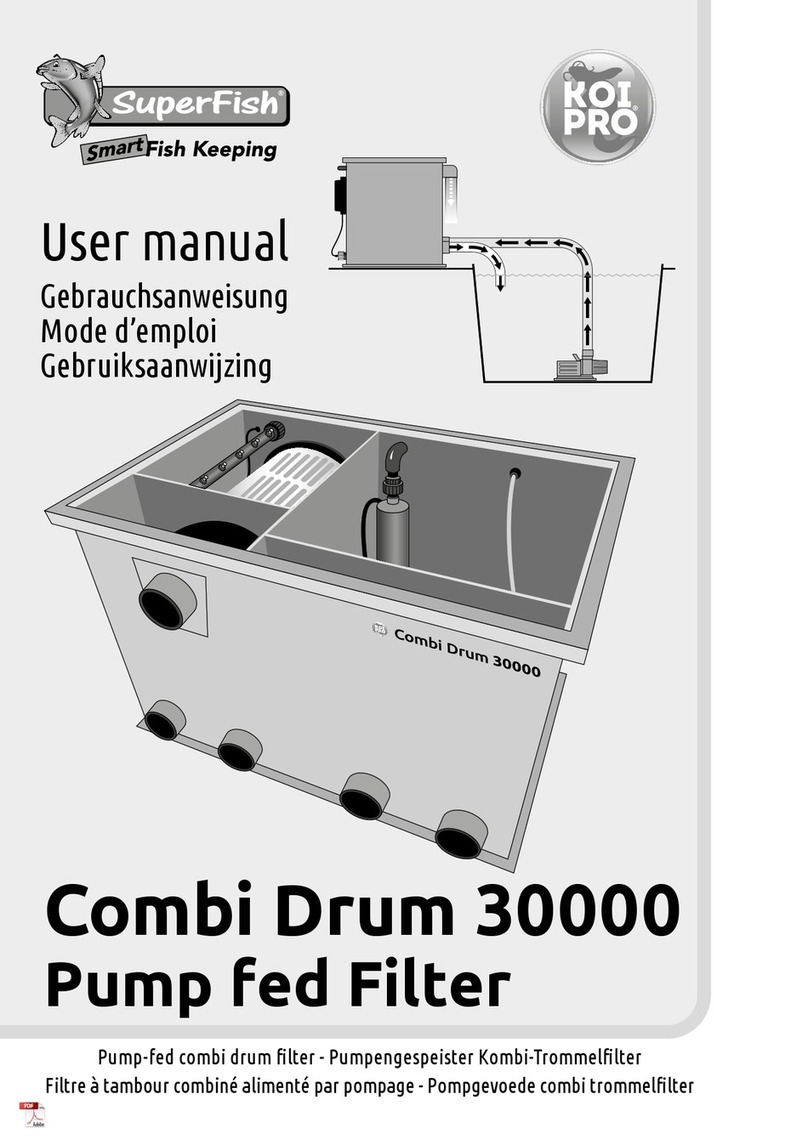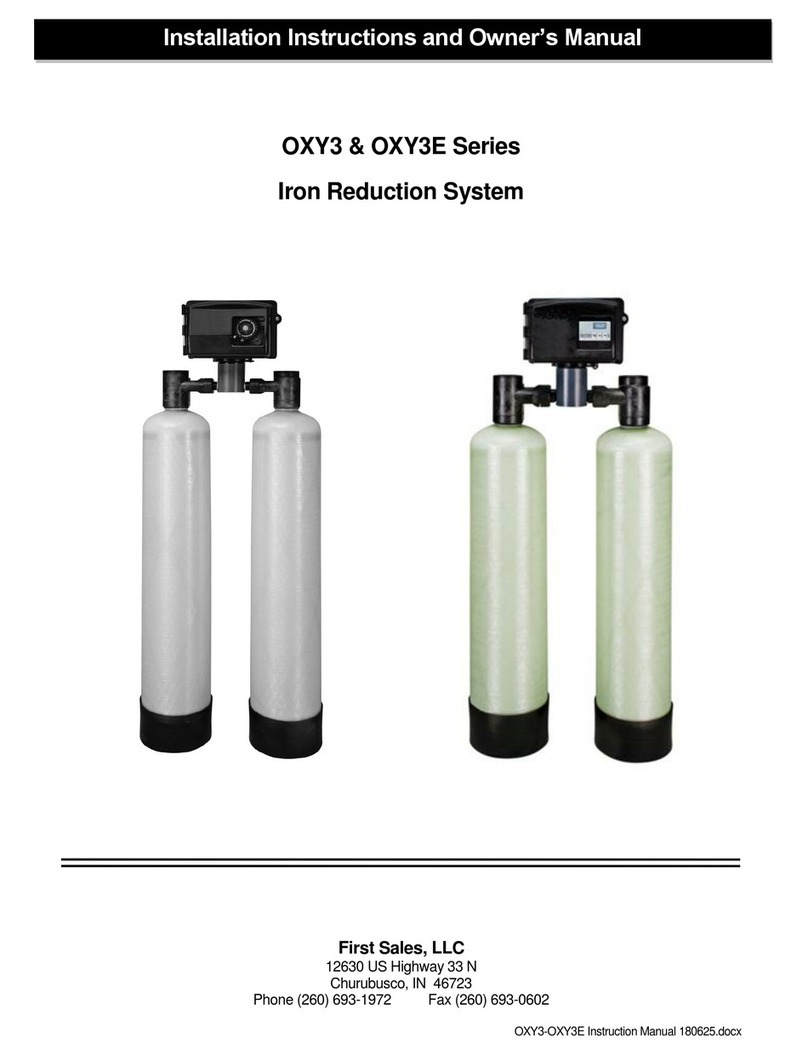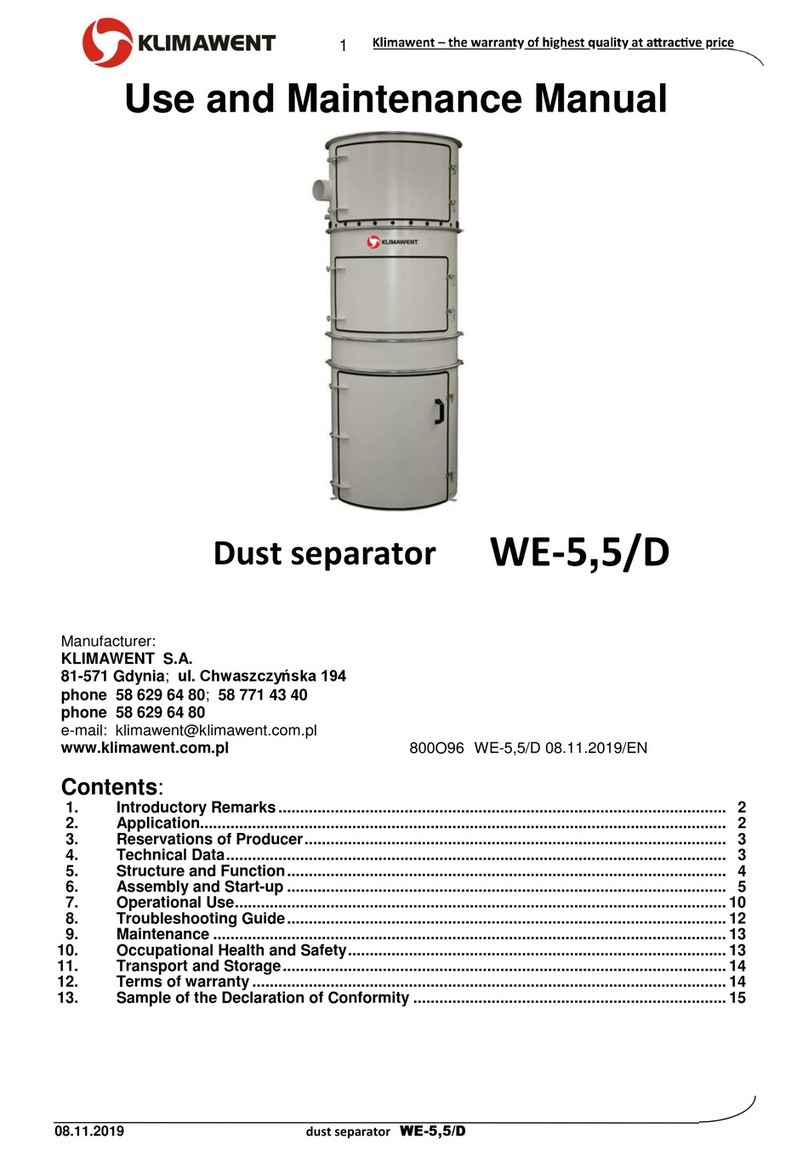
5
TIMER OPERATION
Meter Immediate Control
A meter immediate control measures water usage and regenerates
the system as soon as the calculated system capacity is depleted.
The control calculates the system capacity by dividing the unit
capacity (typically expressed in grains/unit volume) by the feed
water hardness and subtracting the reserve. Meter Immediate
systems generally do not use a reserve volume. However, in twin
tank systems with soft-water regeneration, the reserve capacity
should be set to the volume of water used during regeneration to
prevent hard water break-through. A Meter Immediate control will
also start a regeneration cycle at the programmed regeneration
time if a number of days equal to the regeneration day override
pass before water usage depletes the calculated system capacity.
Meter Delayed Control
A Meter Delayed Control measures water usage and regenerates
the system at the programmed regeneration time after the
calculated system capacity is depleted. As with Meter Immediate
systems, the control calculates the system capacity by dividing
the unit capacity by the feed water hardness and subtracting
the reserve. The reserve should be set to insure that the system
delivers treated water between the time the system capacity is
depleted and the actual regeneration time. A Meter Delayed
control will also start a regeneration cycle at the programmed
regeneration time if a number of days equal to the regeneration
day override pass before water usage depletes the calculated
system capacity.
Time Clock Delayed Control
A Time Clock Delayed Control regenerates the system on a
timed interval. The control will initiate a regeneration cycle at the
programmed regeneration time when the number of days since
the last regeneration equals the regeneration day override value.
Day of the Week Control
This control regenerates the system on a weekly schedule. The
scheduleisdenedinMasterProgrammingbysettingeachdayto
either “off” or “on.” The control will initiates a regeneration cycle
ondaysthathavebeensetto“on”atthespeciedregeneration
time.
Control Operation During Regeneration
During regeneration, the control displays a special regeneration
display. In this display, the control shows the current regeneration
step number the valve is advancing to, or has reached, and the
timeremaininginthatstep.Thestepnumberthatdisplaysashes
until the valve completes driving to this regeneration step position.
Once all regeneration steps are complete the valve returns to
service and resumes normal operation.
Pressing the Extra Cycle button during a regeneration cycle
immediately advances the valve to the next cycle step position and
resumes normal step timing.
Control Operation During Programming
The control only enters the Program Mode with the valve in
service. While in the Program Mode, the control continues
to operate normally monitoring water usage and keeping all
displays up to date. Control programming is stored in memory
permanently, eliminating the need for battery backup power.
Manually Initiating a Regeneration
1. When timer is in service, press the Extra Cycle button for 5
seconds on the main screen.
2. The timer advances to Regeneration Cycle Step #1 (rapid rinse),
and begins programmed time count down.
3. Press the Extra Cycle button once to advance valve to
Regeneration Cycle Step #2 (backwash).
4. Press the Extra Cycle button once to advance valve to
Regeneration Cycle Step #3 (brine draw & slow rinse).
5. Press the Extra Cycle button once to advance valve to
RegenerationCycleStep#4(brinerell).
6. Press the Extra Cycle button once more to advance the valve
back to in service.
NOTE: IF THE UNIT IS A FILTER OR UPFLOW, THE CYCLE STEP
ORDER MAY CHANGE.
NOTE: A QUEUED REGENERATION CAN BE INITIATED BY
PRESSING THE EXTRA CYCLE BUTTON. TO CLEAR A QUEUED
REGENERATION, PRESS THE EXTRA CYCLE BUTTON AGAIN
TO CANCEL. IF REGENERATION OCCURS FOR ANY REASON
PRIOR TO THE DELAYED REGENERATION TIME, THE MANUAL
REGENERATION REQUEST SHALL BE CLEARED.
Control Operation During A Power Failure
The SXT includes integral power backup. In the event of power
failure, the control shifts into a power-saving mode. The control
stops monitoring water usage, and the display and motor shut
down, but it continues to keep track of the time and day for a
minimum of 48 hours.
Thesystemcongurationsettingsarestoredinanon-volatile
memoryandarestoredindenitelywithorwithoutlinepower.The
TimeofDayasheswhentherehasbeenapowerfailure.Pressany
buttontostoptheTimeofDayfromashing.
If power fails while the unit is in regeneration, the control will
save the current valve position before it shuts down. When power
is restored, the control will resume the regeneration cycle from
the point where power failed. Note that if power fails during a
regeneration cycle, the valve will remain in it’s current position until
power is restored. The valve system should include all required
safetycomponentstopreventoverowsresultingfromapower
failure during regeneration.
The control will not start a new regeneration cycle without line
power. If the valve misses a scheduled regeneration due to a
power failure, it will queue a regeneration. Once power is restored,
the control will initiate a regeneration cycle the next time that the
Time of Day equals the programmed regeneration time. Typically,
this means that the valve will regenerate one day after it was
originally scheduled. If the treated water output is important and
power interruptions are expected, the system should be setup
withasufcientreservecapacitytocompensateforregeneration
delays.




















